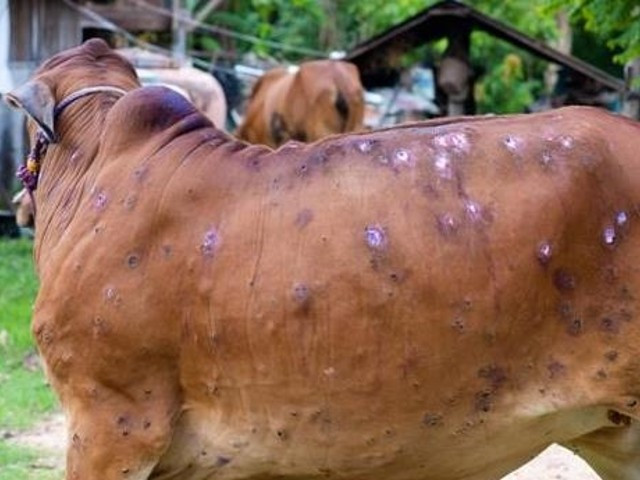Cattle owners are in a major scare as a new disease seems to threaten their livelihood. The disease called Lumpy Skin Disease stands as a major threat to cattle health and milk production in India. In fact, Nagaur district in Rajasthan reported the death of a total of 100 cows a day in the village.
“One JCB machine is standing by just to dig graves for cattle who died due to Lumpy skin disease (LSD) and have been dumped all across highways and open areas. There are thousands of cows/oxen getting infected with the lumpy skin disease virus with the death rate of 40-50 per cent in reality, while other reports display numbers around 5-10 thousand and the death rate is 5-6 per cent,” said Dheeraj Gaur, a local who also owns cattle in the district.
The livelihood of various people has gone astray as cattle deaths are mounting up in several states in the country. States like Punjab, Rajasthan, Gujarat and Jammu and Kashmir reported 3359; 2,111; 1,679, and 62 deaths respectively. However, the death rates do not include cattle who are unaccounted for, making the numbers scarier than they seem.
Furthermore, the symptoms of LSD include high fever and skin nodules which make the cattle evidently weak. Hence, there has been a fall in the fertility rates of cattle.

This fall in cattle has impacted the country in better ways than what the bare eye might notice. For instance, many states have witnessed a fall in milk production due to a scarcity of cattle. Milk production in Punjab has gone down by 15-20%. Moreover, Gujarat has seen a flare-up of a loss of 50,000 liters of milk pertaining to the outbreak.
“Dairy farmers are suffering as there is a fall in milk production by almost 20-45 per cent.. The figures being given officially in Punjab are incorrect. At least 1 lakh animals have died in one district. At least 15,000 animals are dead and are floating in rivers,” states the president of the Progressive dairy farmer Association (PDFA).
Another major concern to the spread of LSD has been the adulteration of milk. FDA has already been in runs for checking milk for adulteration to cover up the shortage in milk production, sellers are susceptible to engage in unethical practices.
As of now, the only vaccine that might mildly help cattle is the vaccine for goat pox and goat pox virus. Unfortunately, the vaccine only suggests 70% effectiveness and, in most cases, fails its purpose.
Farmers are staging protests in Ludhiana asking for fairer prices of milk that might help them hold onto their livelihoods. Furthermore, they are demanding for a complete vaccination of cattle by the monsoon season so that they don’t undergo more losses in the face of inadequate milk production.



















































































